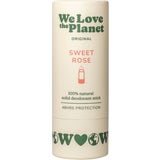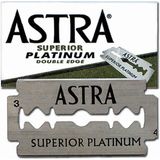All You Need To Know About Sun Protection
In today's blog post, we're taking a closer look at natural sun protection products and the proper application thereof.
How do we know which sun protection factor is best? Should the sunscreens we use contain UVA, UVB or both filters? What amount of product is sufficient and how often do the formulas need to be applied?
Sun protection is a complex topic that poses several questions. We're taking a look at the frequently asked questions in this regard.
Why is sun protection important?
The sun exudes warmth, energy and puts us in a better mood. But, sunrays are harmful. UVA and UVB rays can damage our skin. UVA penetrates the skin and leads to skin aging. Therefore, formulas containing UVA are of the best anti-aging products on the market. UVB does not penetrate the skin as deeply but does cause sunburn on the surface of the skin.
Does sun protection counteract UVA and UVB rays?
Sun creams with both UVA and UVB protection are of the best on the market. In the EU, it is defined by law, that UVA protection should cover at leave one-third of the UVB filters found in sunscreen. This is illustrated on the packaging with UVA enclosed in a small circle. It is advised to use products that offer broad-spectrum protection.
Are there different kinds of sun protection?
There are various kinds of sun protection filters: the most common are chemical and mineral filters. Chemical filters are absorbed by the skin which in turn absorbs the UV rays and transforms them into heat. This form of sun protection is prohibited in natural cosmetics because chemical filters lead to damaging coral reefs and are under suspicion of causing allergic reactions.
Mineral filters form a protective barrier on the skin that is responsible for reflecting sunlight. In the past, formulas that contained mineral filters often left a white cast on the surface of the skin. However, this is no longer the case. Some mineral filters contain nanoparticles. It is therefore recommended to take a closer look at the packaging as these nanoparticles must be declared on the ingredients list.
How long can skin be exposed to sunlight?
This depends on the individual skin type and the skin's natural self-protection time. People with very fair complexion can expose their skin to direct sunlight for approximately 10 minutes, medium skin tones can expose their skin to direct sunlight for up to 15 minutes, and deeper skin tones can expose their skin to direct sunlight for 20 minutes. The exposure time decreases as we sweat and swim, for instance. Therefore, it is advised to reapply sun protection creams on a regular basis.
Do sun creams provide complete protection against UVA and UVB rays?
No, sun creams block out harmful rays to a large extent, but not entirely. A sun protection factor of 15 can protect against up to 94% of UVB rays whereas an SPF of 30 can provide 97% protection and SPF 50 protects against 98% of UVB rays. Apply sun protection regularly, however, does not increase the level of protection.
How much sun protection should be applied?
Apply a sufficient amount of product to achieve the full sun protection effect, this means that 2 mg of product needs to be applied to every square centimeter. This equates to 30 ml of product needed for the whole body. As a general rule of thumb, use ⅓ of a teaspoon of suncream on the face.
Which sun protection factor should I be using?
The optimum sun protection factor depends on several factors:
- skin types
- your whereabouts
- the time of day
- degree of sun exposure
When applied well, most people can opt for an SPF of between 15 and 20. A sun protection factor of 30 should be used on fairer complexions and in warmer regions. Naturally, a higher sun protection factor can always be used.
What other measures can I take to protect my skin against the sun?
Wearing long-sleeved clothing, headgear, such as hats and caps, and sunglasses are an excellent form of sun protection - alongside wearing sunscreen. Do not expose the skin to direct sunlight during the warmer hours of the day (11 am until 3 pm). Additionally, be sure to consume food that is high in antioxidants.
What form of sun protection do natural cosmetics provide?
Today, an extensive assortment of natural sunscreens and nourishing skincare products are available on the market. And, there are several times of consistencies to choose from (liquids, creams, gels, oils, etc.).
Here, you'll find our selected on sunscreens and sun protection products curated from renowned international brands.
Latest reviews
-
 4.0 (2)
4.0 (2)We Love The Planet Fresh Citrus Deodorant, Deodorant Stick (40g)
-10%- Suitable for all skin types
- Free from aluminium salts
- Helps prevent body odour
$6.15 $6.84 ($153.68 / kg)Delivery by December 19
-
 4.0 (2)
4.0 (2)We Love The Planet Sweet Rose Deodorant, Deodorant Stick (40g)
-10%- Suitable for all skin types
- Floral & feminine fragrance
- Aluminium-free
$6.15 $6.84 ($153.68 / kg)Delivery by December 19
-
 2.5 (2)
2.5 (2)Burt's Bees Cinnamon Apple Crisp Lip Balm, 4,25 g
-10%- Intensive care
- Moisturises
- For super soft lips
$4.13 $4.59 ($971.60 / kg)Delivery by December 19
-
 4.8 (15)
4.8 (15)Tukiki Astra Superior Platinum, 5 Pcs
-10%- Ideal for men & women
- Rust-free steel
- Double-edged universal blade
$1.31 $1.45 ($0.26 / Pc)Delivery by December 19
Magazine Articles:
Discover Ecco Verde:
-
Get at least 1 free sample
per order -
Delivery in 3 business days.
More than 19.800 products
Secure payments
with SSL encryption technology

